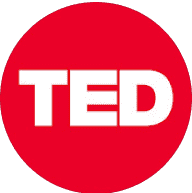Entanglement and Complexity: Gravity and Quantum Mechanics
Stanford Institute for Theoretical Physics・4 minutes read
A secret conference discussed dualities in physics, quantum states, and tensor networks, impacting theoretical physics through AdS/CFT duality and black hole experiments involving entangled particles and Einstein-Rosen bridges. The complexity of quantum states, black holes, and information spreading links gravity, quantum mechanics, and general relativity, revealing new insights through entanglement, scrambling, and system behavior dynamics.
Insights
- The concept of entanglement, where systems share information without direct connection, plays a crucial role in simplifying the description of quantum states by focusing on patterns of entanglement, aiding in calculations and understanding of complex quantum systems.
- The growth of complexity in tensor networks, crucial for understanding the AdS/CFT duality connecting gravity and quantum field theory, mirrors the growth of complexity in black holes, with the formation of entangled black holes leading to the creation of Einstein-Rosen bridges that pose challenges for reuniting separated individuals, showcasing the intricate relationship between quantum mechanics, gravity, and spatial connectivity.
Get key ideas from YouTube videos. It’s free
Recent questions
What is entanglement in quantum mechanics?
Entanglement involves shared information between systems, adding complexity.
How do tensor networks simplify quantum states?
Tensor networks represent entanglement structures, aiding in calculations.
What is the AdS/CFT duality?
AdS/CFT duality connects gravity with quantum field theory.
How do black holes relate to quantum scrambling?
Black holes are fast scramblers, spreading information rapidly.
What is the EPR connection in physics?
EPR connects entanglement with spatial connectivity.
Related videos
Summary
00:00
"Quantum Entanglement and Tensor Networks in Physics"
- A secret conference was held off-campus at a military site to discuss video recording and travel to Mr. Simon's compound in New York.
- Dualities in physics involve two equivalent descriptions of the same thing, one involving fluctuating variables and the other simpler and classical.
- A special duality emerged between highly quantum mechanical systems and systems described by gravity, impacting various areas of theoretical physics.
- General relativity and Quantum information Theory are central to the explosion in theoretical physics, influencing fields like Quantum field Theory, string theory, and more.
- Quantum mechanical systems are exponentially complex, making them hard to describe on classical computers due to the vast number of complex coefficients needed.
- Entanglement in quantum mechanics, where systems are not connected but share information, adds to the complexity and difficulty in understanding quantum mechanics.
- Entanglement can help navigate through the complexity of quantum states by focusing on patterns of entanglement to simplify the description of systems.
- Entanglement is not limited to particles but also exists in the vacuum, with entanglement entropy proportional to the area of the boundary separating regions.
- Tensor networks, introduced by physicist Vidal in 2006, use entanglement patterns to describe the wave function of systems like spin lattices in condensed matter physics.
- Tensor networks help navigate the complexity of Hilbert space by representing entanglement structures in systems, aiding in calculations and understanding of quantum states.
17:13
Tensor Networks: Key to Quantum Complexity and Duality
- The real geometry lies in the tensor network on the boundary, not in the bulk geometry.
- The complexity of a state is determined by the minimal tensor network needed to describe it.
- Tensor networks can measure entanglement between different parts of a system.
- Entanglement can be destroyed by feeding energy into the system, breaking the tensor network connections.
- The concept of tensor networks is crucial in understanding the AdS/CFT duality discovered in 1998.
- AdS/CFT duality connects gravity in anti-de Sitter space with quantum field theory on the boundary.
- Excited quantum states require larger tensor networks than ground states to describe their complexity.
- The complexity of quantum states increases over time, reflected in the growth of tensor networks.
- Adding energy to anti-de Sitter space can lead to the formation of black holes.
- Inside a black hole, the space grows rapidly, resembling the growth of complexity in tensor networks.
34:48
"Love Across Black Holes: Quantum Connection"
- Alice and Bob, Space Cadets in love, are separated 10 billion light years apart due to an accident.
- They consider creating a pair of black holes to reunite, leading to two experiment versions.
- In the first experiment, they create two independent black holes by jamming particles together.
- The second experiment involves entangling particles before creating the black holes, resulting in entangled black holes.
- Entangled black holes form an Einstein-Rosen bridge, allowing for a shortcut connection between them.
- The complexity of the Quantum State causes the Einstein-Rosen bridge to grow over time.
- The growth of the bridge poses a challenge for Alice and Bob to meet inside the black holes.
- The possibility of using quantum computers to prevent the bridge's growth is considered.
- The equivalence between entanglement and spatial connectivity is termed EPR, discovered in 1935.
- The connection between gravity, quantum mechanics, and general relativity opens new avenues for solving complex physics problems.
52:36
"Fast Scrambling Theory and Black Holes"
- The game involves blindfolding participants every 10 seconds, where they find a partner and shake hands.
- The black ink on Pierre's hand spreads exponentially through handshakes.
- In a linear chain of interactions, the ink spreads slower than in a free interaction scenario.
- The time to infect everyone in a room is logarithmic to the number of people.
- The rate of interaction is linked to temperature, affecting the speed of infection spread.
- Fast scrambling theory suggests that no system can scramble faster than the contagion model.
- Black holes are proven to be fast scramblers, smearing out information at a specific rate.
- Perturbations in black holes lead to shock waves that spread information rapidly.
- The time for a shock wave to reach the horizon aligns with the conjectured bound on scrambling time.
- Complexity theory plays a role in understanding black hole interiors and quantum entanglement.
01:10:25
Complexity in Black Hole Field Theories
- Field theories that encompass entangled black holes and bridges between them must be complex and chaotic to meet the requirements of gravity, indicating a strong coupling and the presence of fast scramblers.
- The study of black holes and anti-de Sitter space (AdS) focuses on non-dynamical aspects, contrasting with cosmology's exploration of exponentially expanding universes without boundaries, raising questions about the implications of these different approaches.




